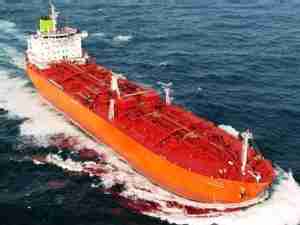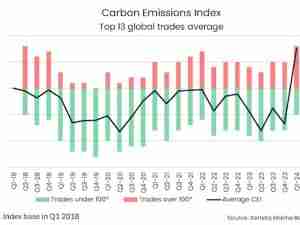As flagged by the preliminary snapshot released earlier this month, net imports of refined copper were weak at 129,000 tons, albeit slightly higher than those in April thanks to a drop-off in exports to 20,000 tons from 44,500 tons.
Net imports of primary aluminium shrank to 3,300 tons, the lowest monthly figure so far this year, while exports of product accelerated to a new all-time high of 340,000 tons. The latter is thought to reflect exporters rushing to beat an expected tightening of the tax rebates on several product categories.
Net imports of both tin and nickel at 800 tonnes and 13,600 tonnes respectively marked a continuation of recent trends. Net trade in lead remains broadly flat, while China continues to import zinc it doesn't need in what appears largely a function of "financial" arbitrage.
More interesting this time around were some of the raw materials numbers.
Nickel Ore Surge
China's imports of nickel ore and concentrates surged to an all-time high of 4.19 million tonnes, far eclipsing the previous high of 2.85 million tons in September 2009.
Booming imports, in excess of two million tons, from both Indonesia and the Philippines were the driver.
Ore imports from these two countries feed nickel pig iron (NPI) producers and as such are a widely-used proxy for what is happening in the NPI sector, which doesn't make it onto the official count of Chinese nickel production.
It's an imperfect proxy. For example, it is quite possible that May's super-high figure reflects stock building rather than actual NPI production.
Yet the broader trend is one of steadily rising ore imports. They jumped by 52 percent last year and are already up by another 62 percent this year.
That would seem to back up anecdotal evidence that NPI production is on a surge in China, reflecting a new generation of operators that are increasingly integrated with stainless steel mills.
The effect is to mute import demand for other types of nickel, most notably ferronickel, imports of which dropped 15 percent in the first five months of this year.
Net imports of refined nickel have remained relatively steady so far this year, although it's worth considering what they might have been were it not for an increasing reliance on NPI by China's stainless sector.
The more interesting question is what happens next.
How will the combination of lower nickel prices and a summer power crunch affect Chinese NPI production rates?
There is a mix of views in the analyst community as where NPI sits on the nickel cost curve. It's relatively high but exactly how high is difficult to say because the sector encompasses a wide spectrum of operators using different types of technology.
Barclays Capital, for example, suggests that "marginal NPI producers are now loss-making" but be warned that the Chinese NPI sector has up to now proved far more resilient than Western observers had anticipated.
The next few months' data will be worth tracking closely. The strength of Chinese NPI production is the key "missing link" in terms of assessing global market balance this year.
Alumina Slump
China's imports of alumina, by contrast, slumped to a multi-year low of 113,500 tonnes in May.
It wasn't a rogue figure. Imports fell by 16 percent last year and have fallen harder still this year. The cumulative Jan-May total of 945,000 tonnes marked a 57-percent year-on-year drop.
Remember that Chinese aluminium smelters have been churning out record amounts of the light metal this year so the slump in alumina imports is not for want of demand.
Rather, China's own alumina production has been rocketing in recent months. It surpassed the 3-million tonne level for the first time ever in May and cumulative output this year has increased by 16 percent.
Indeed, based on figures from the National Bureau of Statistics and using a 2:1 ratio for the amount of alumina needed to make one








